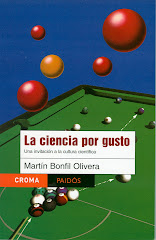by Martín Bonfil Olivera
Published in Milenio Diario, May 13, 2009
 The relationship between Mexicans and science is schizophrenic. On the one side, we want to trust science, and on the other we deny its credibility.
The relationship between Mexicans and science is schizophrenic. On the one side, we want to trust science, and on the other we deny its credibility.
In the wake of the recent outbreak of influenza, Mexican media demanded precise and fixed figures from day one, when the were impossible to have. Reporters demanded them in part by lack or knowledge about how science works, how it advances slowly and by successive approximations.
But the informative void was filled by another virus: conspiracy theories (mainly through e-mails or by word of mouth).
The majority of these were just simply absurd: the virus is an invention ("influenza my ass", López Obrador dixit); Obama brought the virus to Mexico; it was released as part of an agreement to reactivate world economy, at any cost; the outbreak was part of a strategy to scare Mexicans right before the July elections…
The problema is that in
What we do have, certainlly, is an advanced "culture of distrust": when our expectations do not match, we deny the data, we accuse science of authoritarism and we tend to believe in complots.
Unfortunately, our authorities have not earned that trust. Sadly, also, our culture of distrust makes us prefer conspiracy theories than trustful information.
Poor
(translated by Adrián Robles Benavides) To receive Science for pleasure weekly
in your email, subscribe here!





